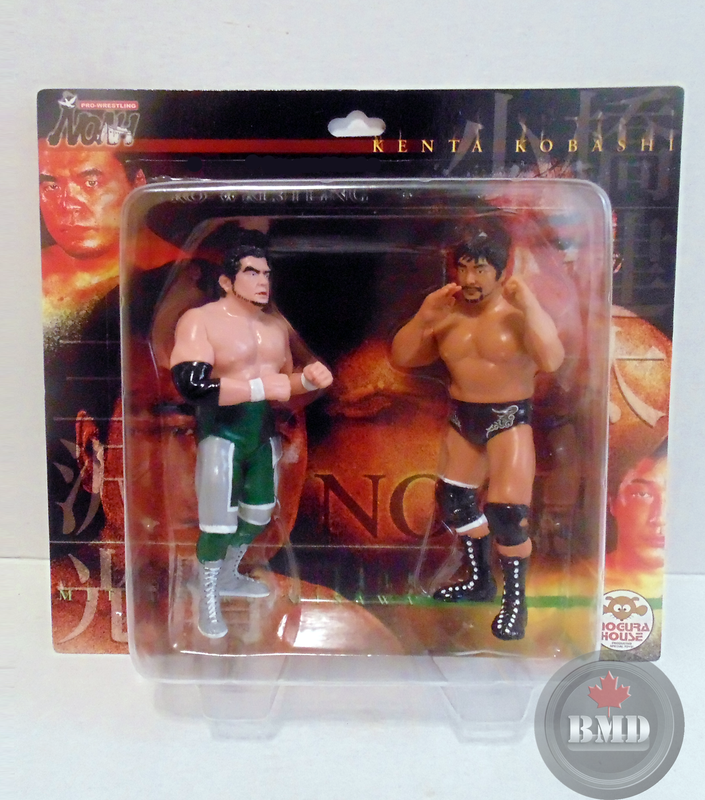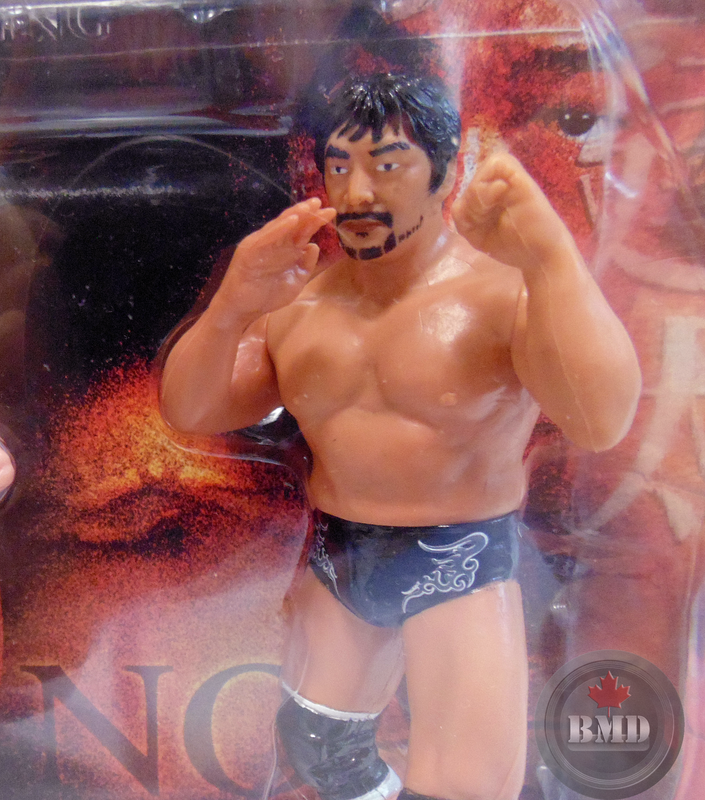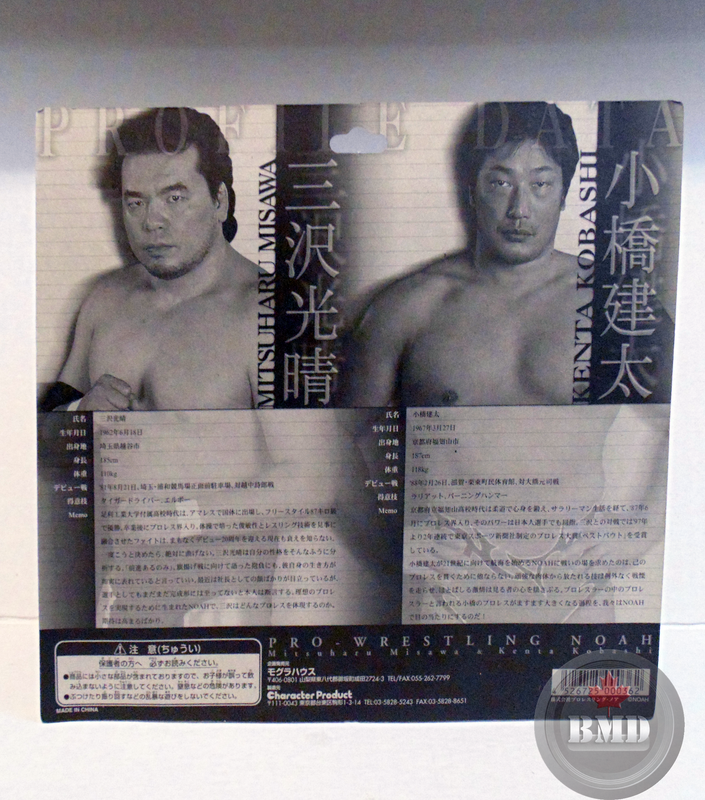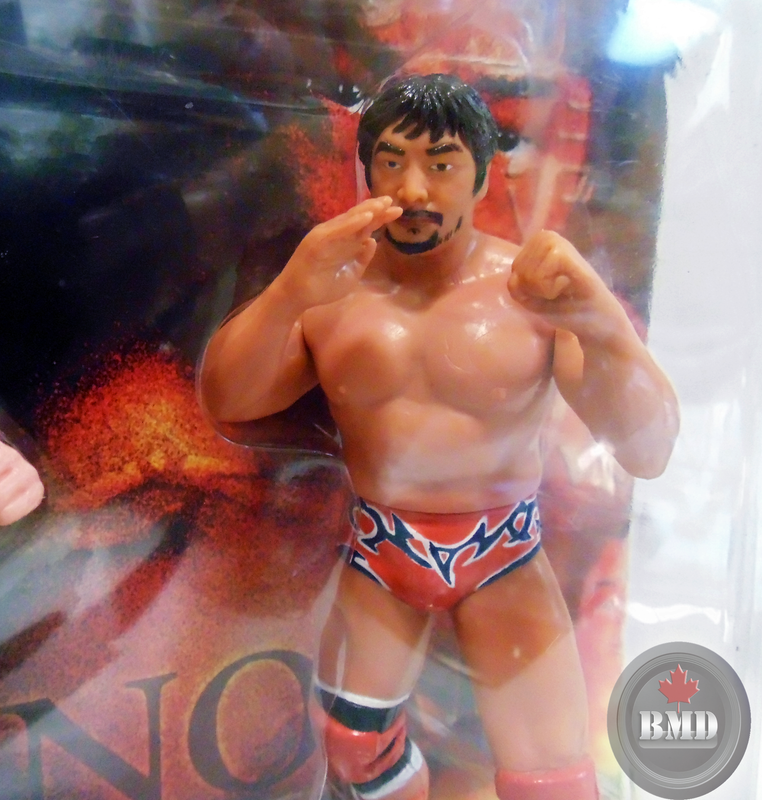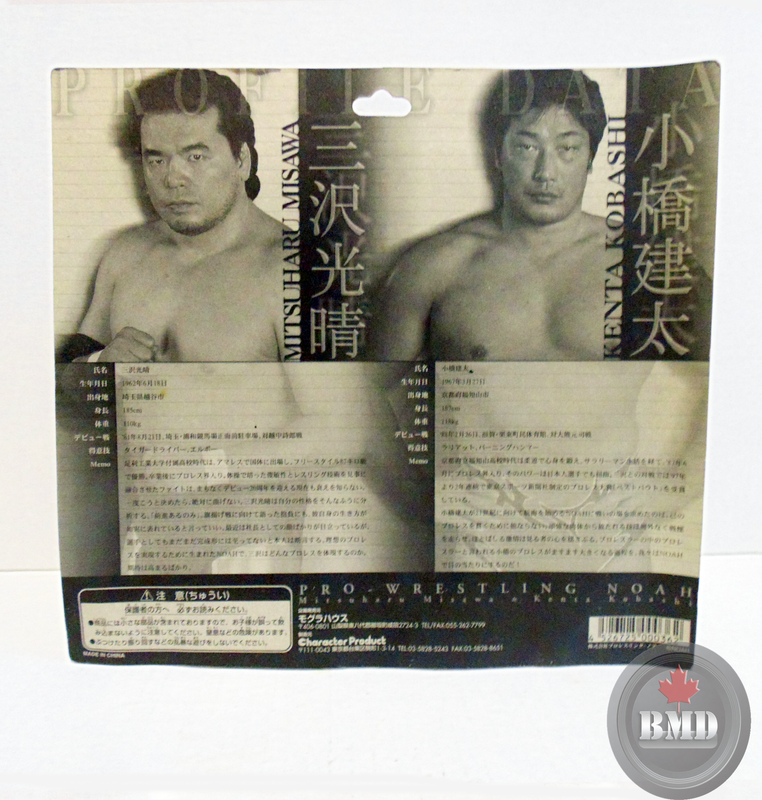Welcome back to the largest source of Japanese Pro-Wrestling collectible
information on the web. In these pages, you'll find over a thousand product
photos, in-depth reviews as well as the real-life history behind the collectables.
For blog #114, we'll be stepping back almost 30 years ago to cover a series
of Pro-Wrestling arcade prize items that were only released in Japan.
Blog #114 - Roller tron plush figures:
_______________________________________
Before there were plush, there were the "Supershows".
In the early 1990's, Wrestling history was made when the WWE (then WWF),
WCW, NJPW, SWS and AJPW Wrestling promotions joined forces for a series
of dream match "supershows".
The first supershow (the "
WWF/NJPW/AJPW Wrestling Summit") was held
on April 13th, 1990 at Japan's Tokyo Dome, which featured the WWF's biggest
stars of the era such as Hulk Hogan, Andre The Giant, The Ultimate Warrior,
Jake "The Snake" Roberts, "Macho Man" Randy Savage and Bret Hart take on
Japanese legends Genichiro Tenryu, Giant Baba, Jumbo Tsuruta, Mitsuharu
Misawa (as Tiger Mask II), Kenta Kobashi and Toshiaki Kawada among others.
The initial success of the
WWF/NJPW/AJPW Wrestling Summit spawned
four more events to follow: the
"
WWF/SWS WrestleFest at Tokyo Dome"
(Genichiro Tenryu and The Great Kabuki's start-up promotion which would
eventually become W.A.R.) on Saturday, March 30th, 1991 and the
"WCW/
New Japan Supershow" events which ran from March 21st, 1991, January
4th, 1992 and one year to the day once again on January 4th, 1993.
Enter Rollertron.
with the initial success of the Supershows in Japan, NJPW, AJPW and SWS
were quick to put out figures based on the Wrestlers featured at the events.
The plush figures were first created by Japanese company Rollertron around
1991, which supplied the plush to Japanese Arcades to be used as prize items
in each Arcade's popular Crane Claw machines.
The official name of the plush line is "
ローラートロン レッスルフェスト
プロレスぬいぐるみじゃい" (Rollertron Wrestlefest Pro-Wrestling Plush
Toy".
Not since BANDAI's 1986 "The Wrestler" series of Keshigomu erasers
(which you can read more about
HERE) has a diverse roster of popular
Gaijin talent been included in a Japanese Wrestling product.
Let's take a look at some of the Wrestlers featured in the first two series':
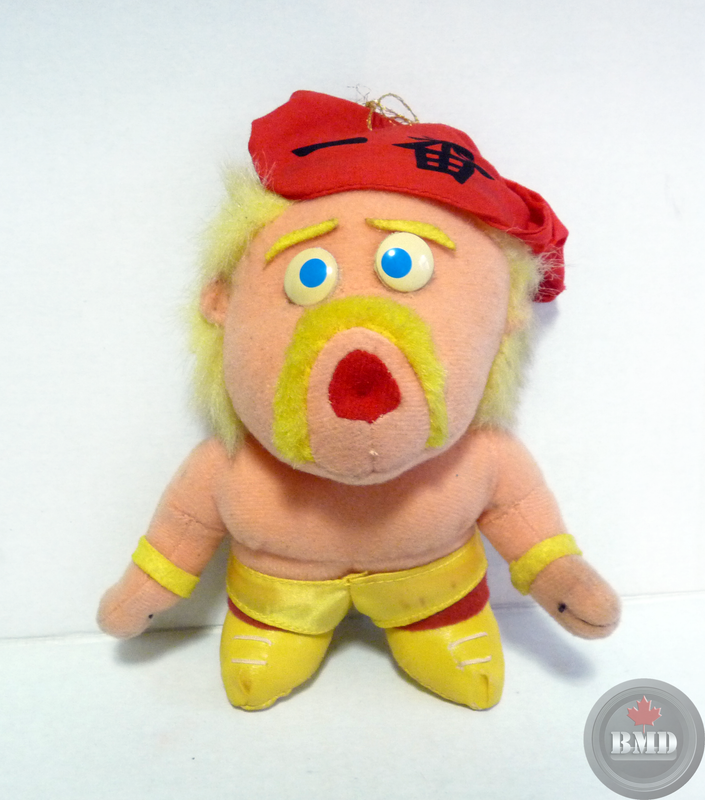
"The Immortal" Hulk Hogan - who looks like he just seen the scariest movie
of all time.
The Japanese writing on Hogan's bandana reads "
一番" (Ichiban - which is
Japanese for "Number 1") which Hogan had emblazoned on his ring trunks
while competing in NJPW in the very early 1980's (Pre-Hulkamania era).
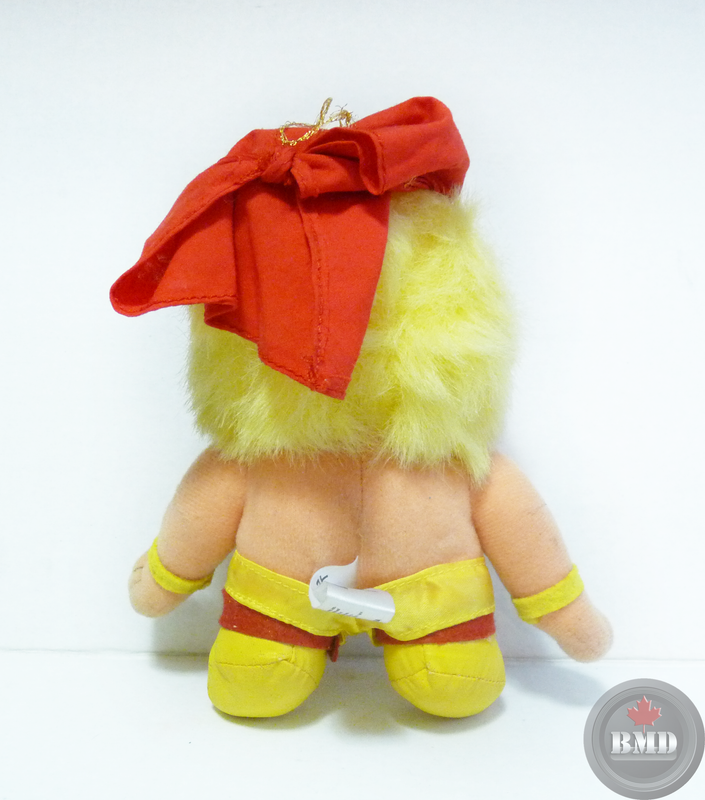
Hogan's bandana (which can be unraveled) is sewn to the Hogan plush's
head. There is also a golden string at the top of Hogan's bandana for display
purposes.

The series 2 variant of Hogan features Hogan's classic "HULK RULES"
slogan on the Hulkster's bandana.
The art direction for series 2 reminds me of the WWE's "Bleacher
Creatures" line of plush.
Again, Hogan's Bandana is sewn to the Hulkster plush's head.
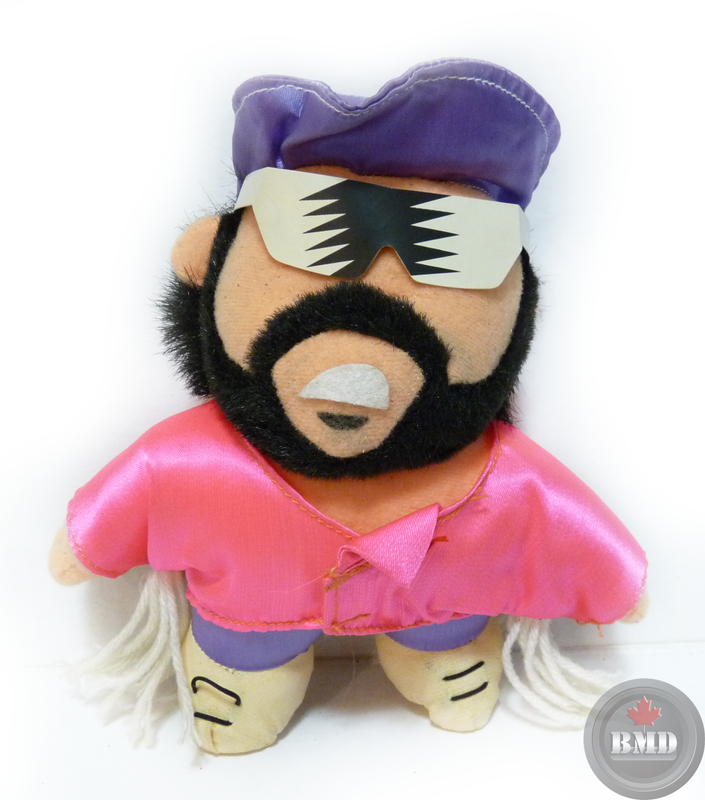
"OOOOOH YEAH!" another popular addition is the late, great "Macho
Man" Randy Savage.
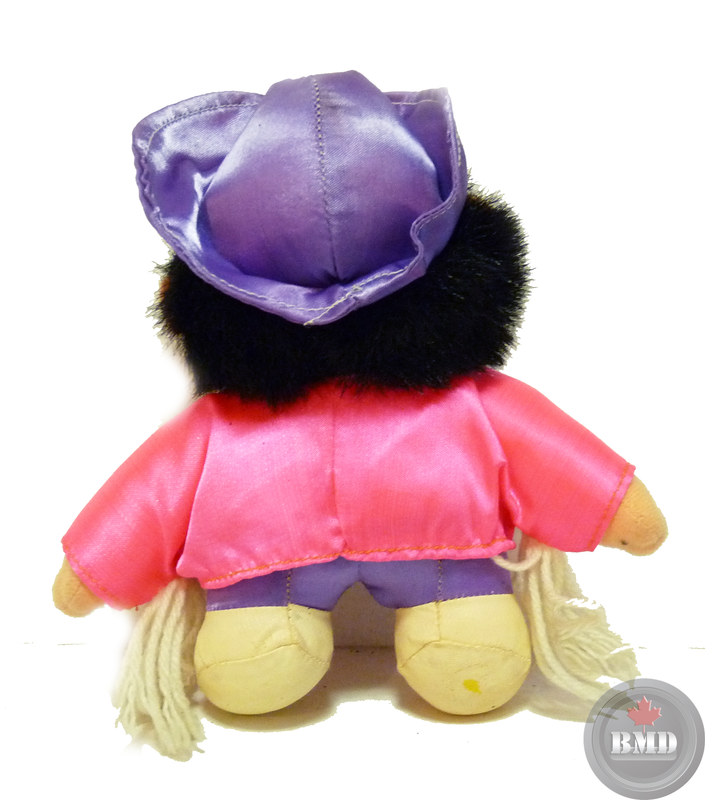
Complete with bushy hair, colourful attire, fringed sleeves and signature
glasses, it's easy to see why the Macho King is a series favorite.
A common side effect with these plushies is their discoloration brought
on by age (look at Macho's fringe and boots).
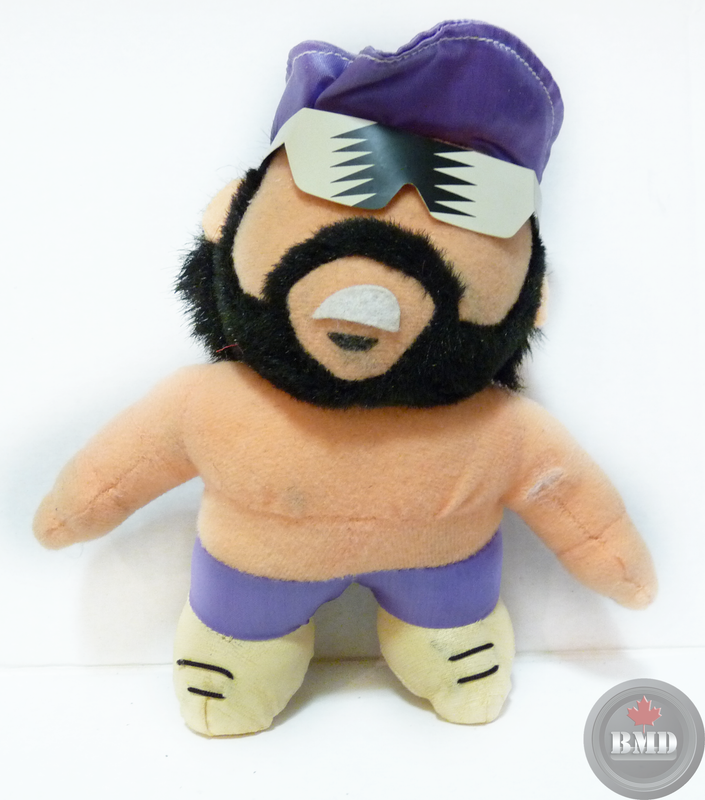
As an added bonus, you can even remove Macho's polyester jacket
(which is held together with Velcro).

No, it's not Lemmy Kilmister of Motorhead. Macho's series 2 variant
features yellow fringe, green tights/hat, a purple polyester jacket and
dark shades.

Just like the last variant, Macho's Velcro jacket is also removable.
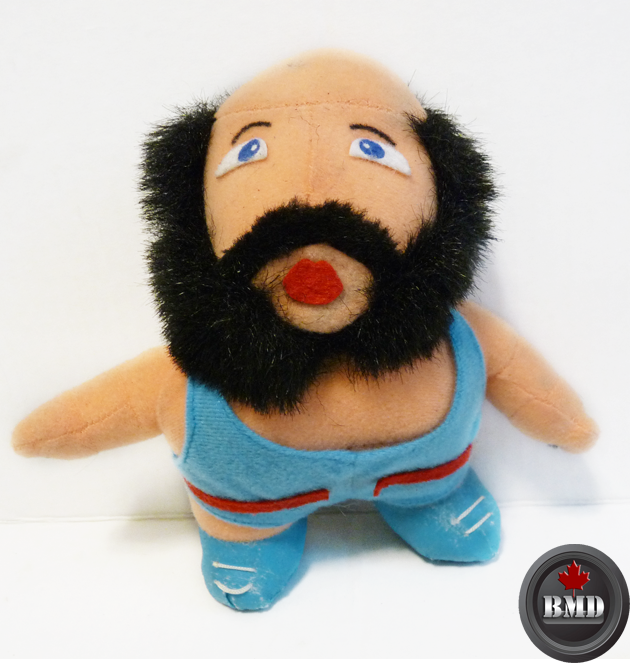
The next addition is another Wrestler who got his first major push in
Japan, the late John "Earthquake" Tenta.
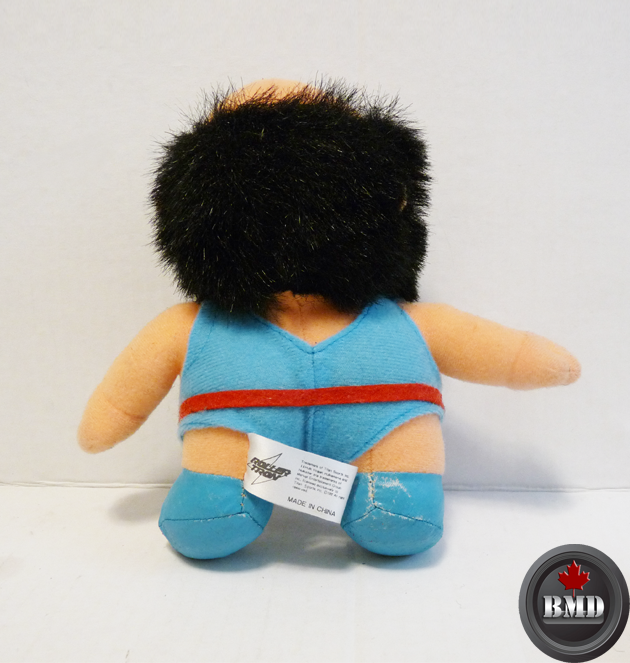
Earthquake is featured in his classic blue debut attire with red belt.
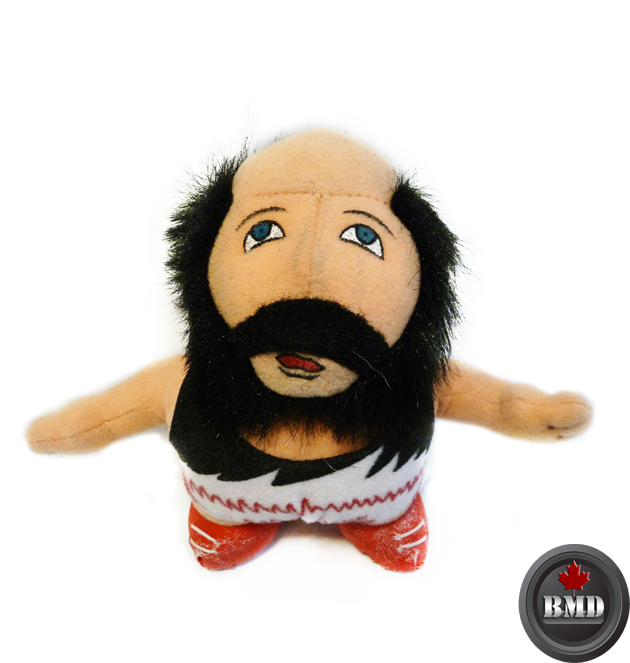
The series 2 variant (which you can identify by art style of each Wrestler's
eyes) of Earthquake in his time-accurate Natural Disaster's tag team attire.
Earthquake's face is another example of how dirt accumulation and
aging over the years can affect these plush figures.
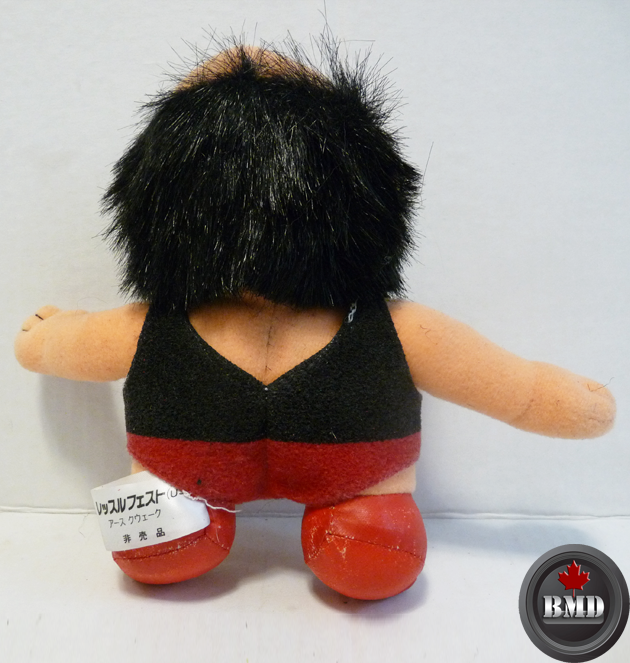
Unfortunately, Earthquake's Natural Disasters tag partner Typhoon was not
added to the Rollertron series 1 or 2 lineup.
It's worth noting that both Earthquake plushies are the only figures
released of Tenta in Japan.

My absolute favorite figures from the set are of the legendary tag team "The
Road Warriors".
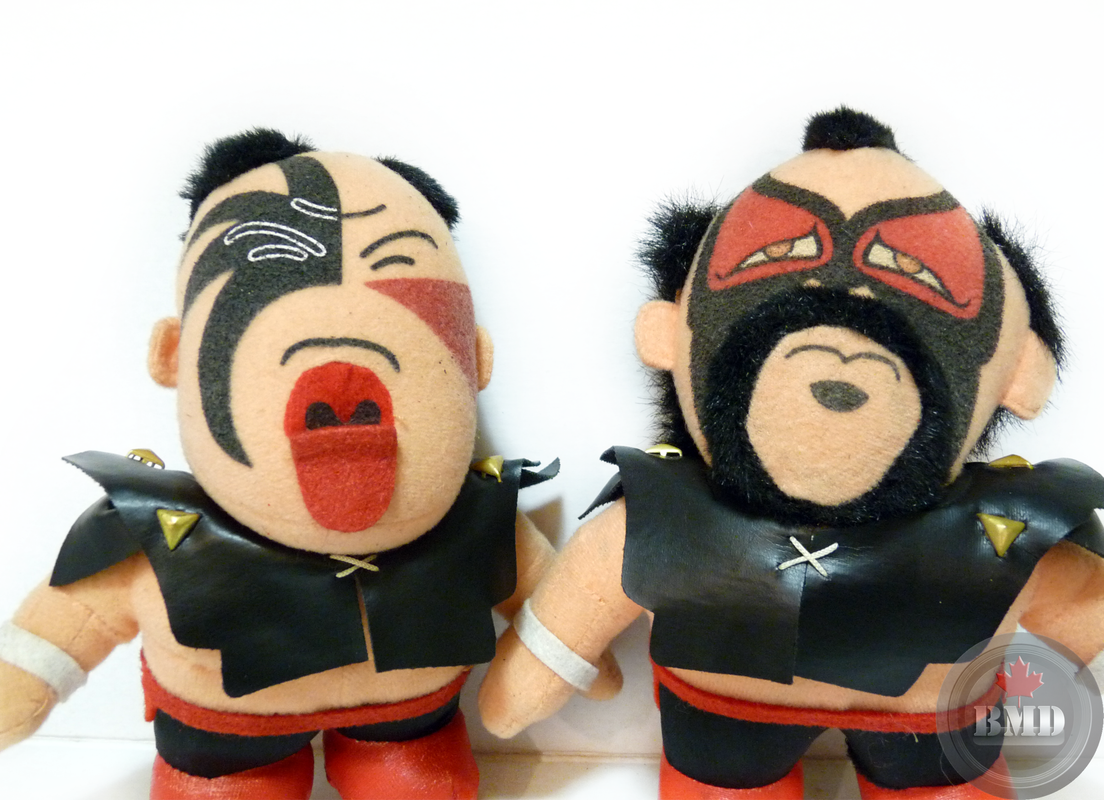
Both Road Warriors come dressed in their classic black shoulder pads
entrance attire.
Road Warrior Hawk features an outstretched tongue, thin mustache and
intense facial expression. Road Warrior Animal also comes in matching
attire with a stoic facial expression.
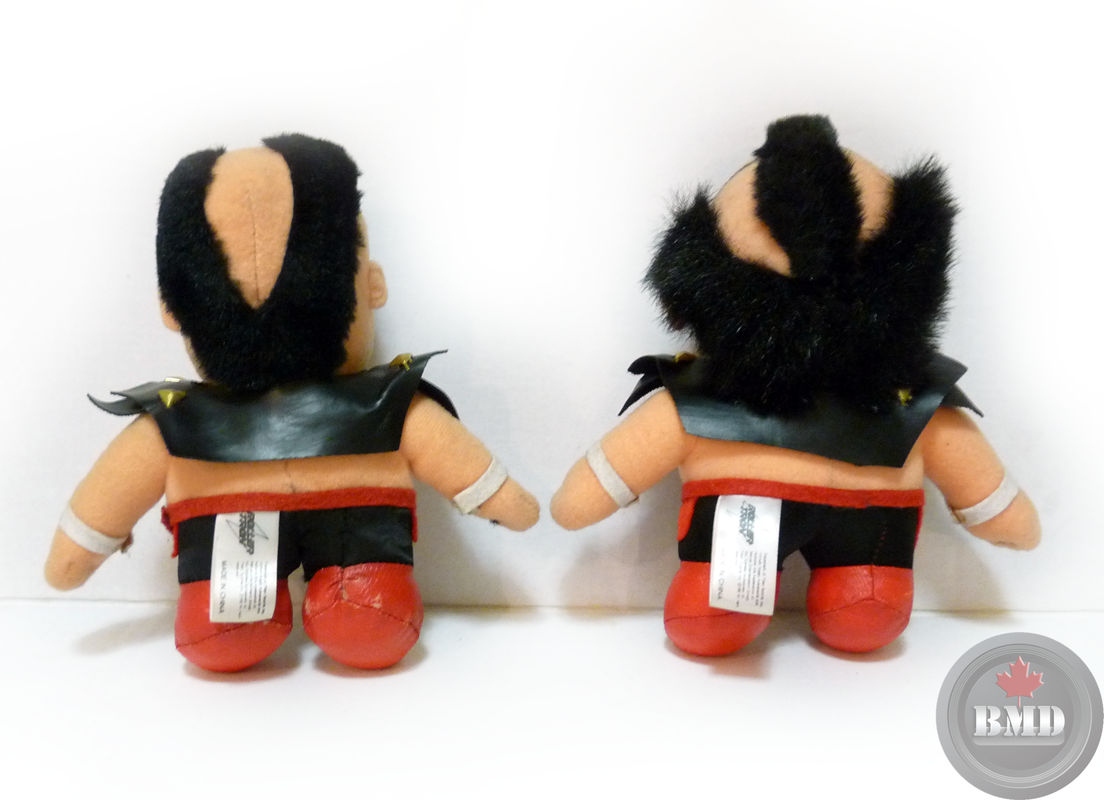
The shoulder pads cannot be removed without damaging the plush (which
is a real shame).
Wrestling trivia: the Road Warrior's famous hairstyles were inspired by
the original Mad Max movie which came out in 1979. Road Warrior Hawk
then suggested that both tag members have similar "connecting" haircuts
which would become the duo's iconic look.
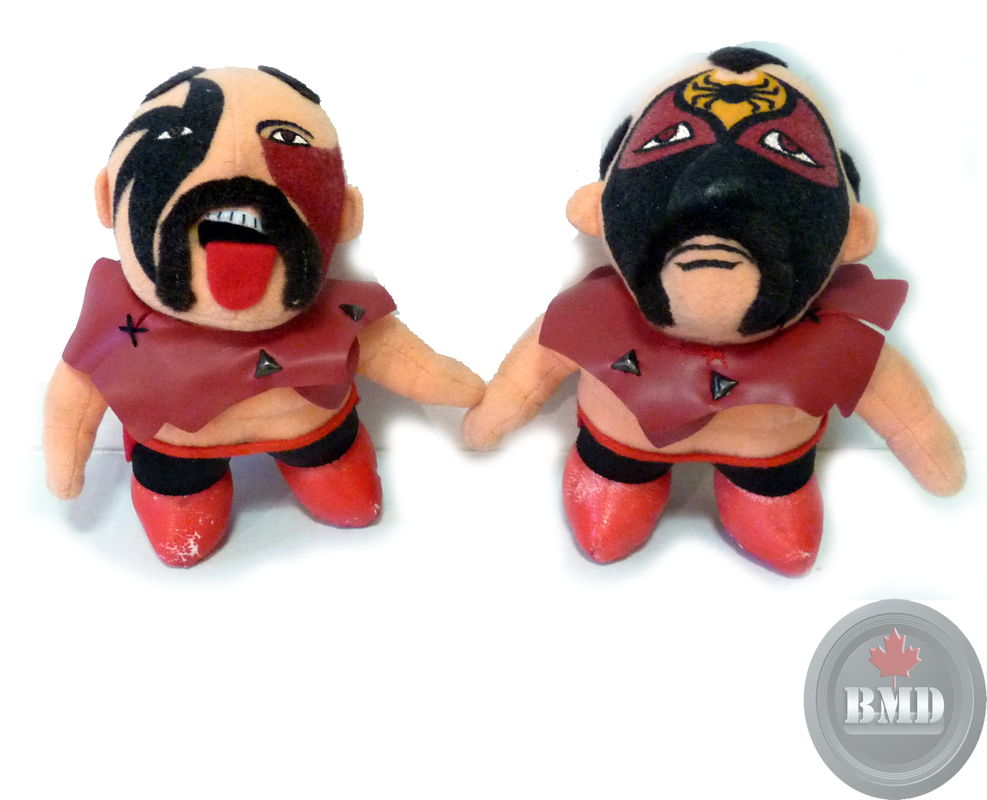
The second variant (I believe both sets were released in set 2) features
the Road Warriors in their modern Red shoulder pads.
Both Animal and Hawk now contain a fabric, handlebar mustache.
Road Warrior Animal also includes updated facepaint with his iconic
spider design.
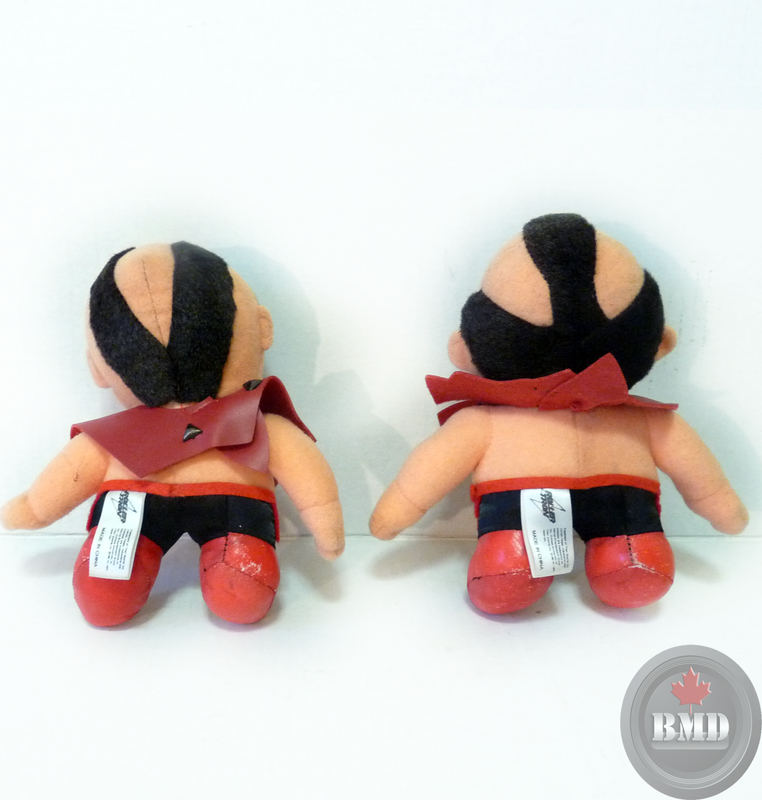
Again, the duo's shoulder pads are not removable.

The first Japanese figure of the set is NJPW founder and Wrestling icon
Antonio Inoki.
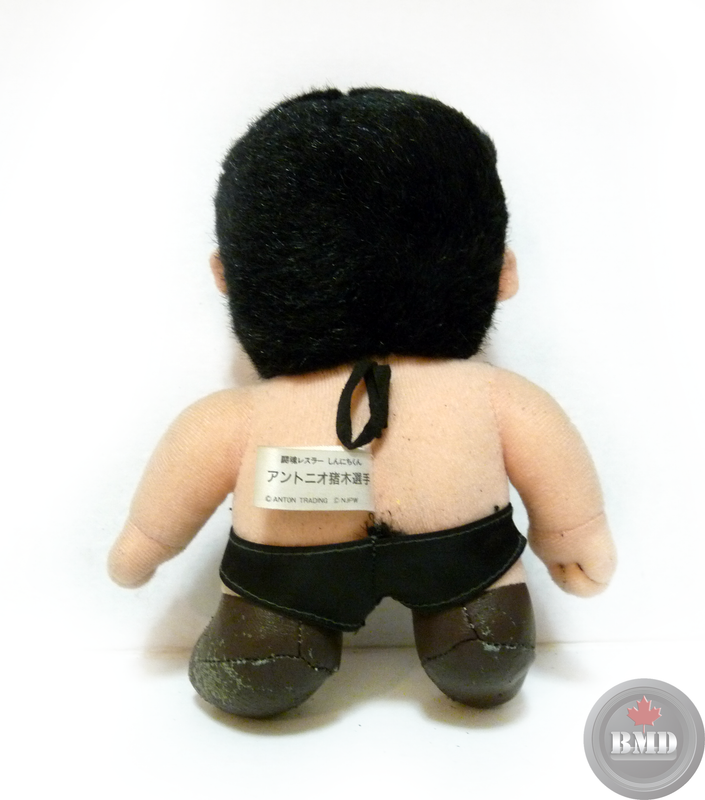
Antonio Inoki comes with a fabric string on his back for display.

Antonio Inoki's name is written in Japanese along with his own early 90's
copyright "(C) ANTON TRADING" (which would become "Inoki
International" in the years to follow.
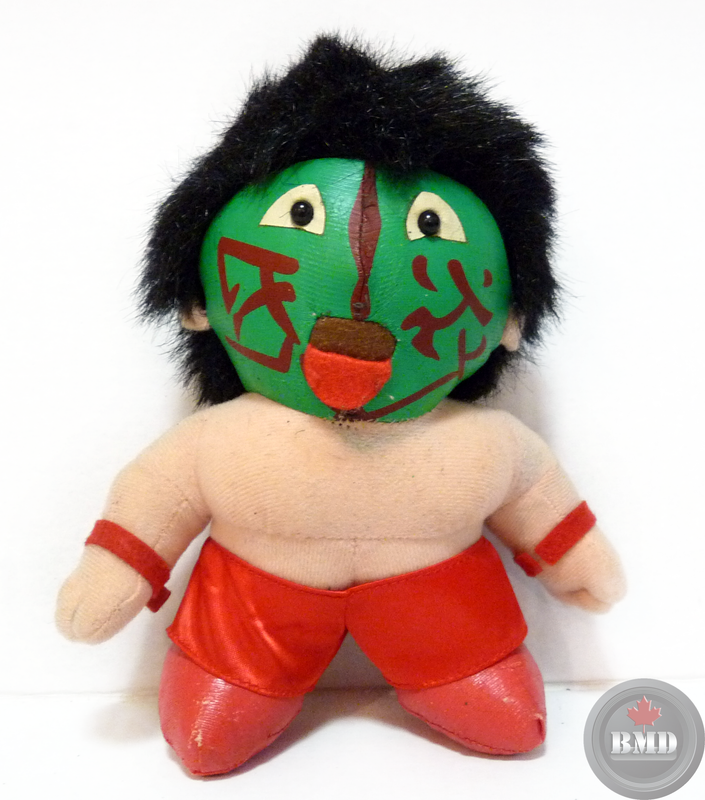
Another popular addition to the first two waves of plush figures is The
Great Muta (Keiji Mutoh).
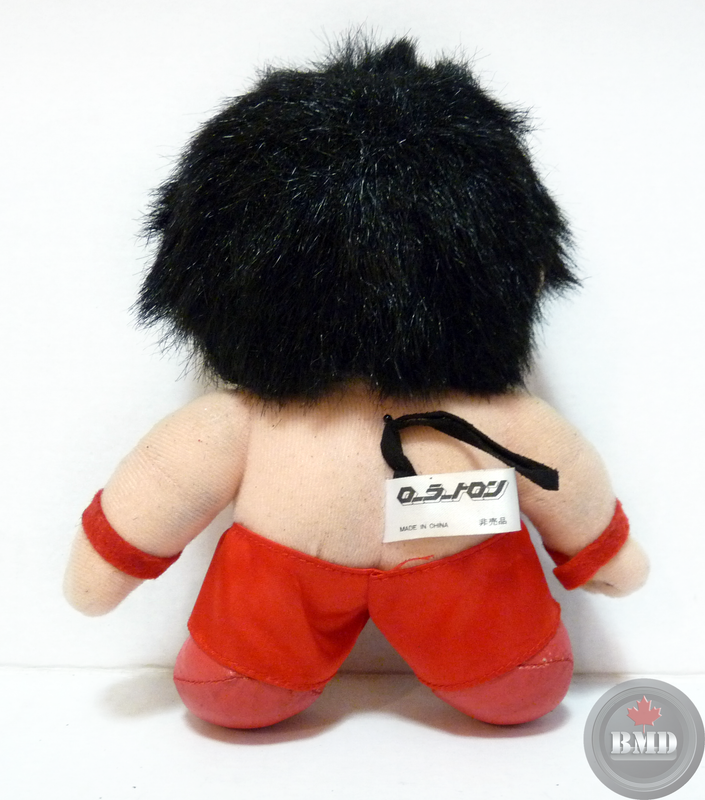
The Great Muta contains a fabric hook on his back along with a tag that
reads the "Rollertron" in Japanese.
Just like The Road Warriors plush sets, Great Muta was also released in a
special blue facepaint variant.
To date, I believe this is the only Great Muta figure released with blue facepaint.
The handlebar mustache trend continues with Masahiro Chono's first
-ever figure.
This design is based on Chono's pre-heel turn (which would happen
after Chono's third G1 Climax victory in 1994).
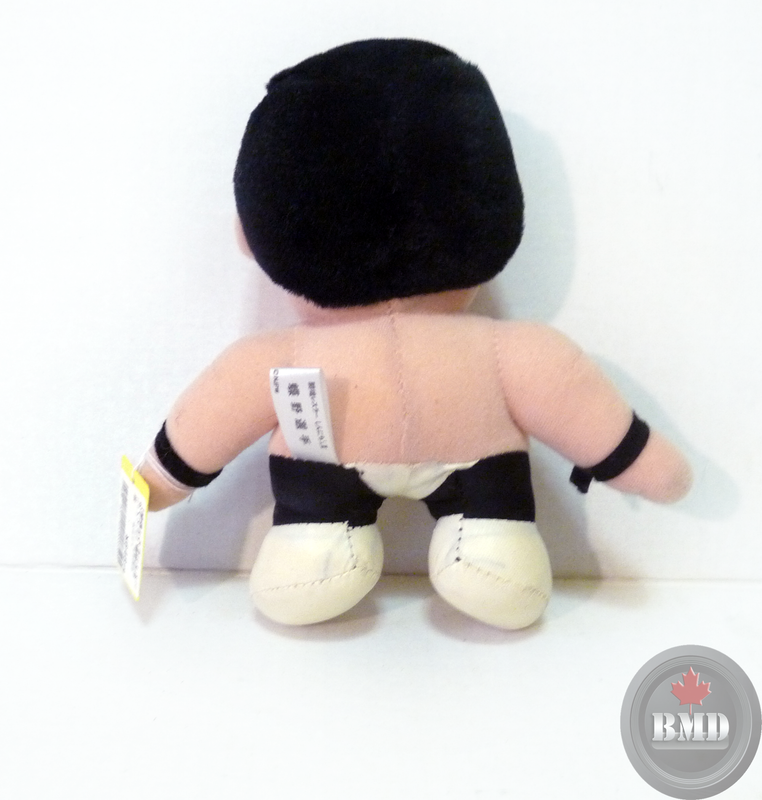
Speaking of Wrestling angles,

the third member of NJPW's infamous "Toukon Sanjuushi" (Three
Musketeers) group, "the king of destruction" Shinya Hashimoto.
Shinya's
only figure to feature facial hair is based on Hashimoto's contro
-versial feud with Tony "Ludvig Borga" Halme.
On December 26th, 1990, Halme had defeated Hashimoto in the first of a
series of matches billed as "Wrestler vs Boxer" (one of the earliest
examples of New Japan incorporating mixed martial arts matches into
their cards) fights.
As New Japan storylines go, Shinya would take a voluntary leave of absence
to begin training in "China" in order to prepare for a series of return fights
against Halme.
The bearded Hashimoto figure is based on Hashimoto's October 5th, 1991
return match against Halme where Hashimoto defeated Halme 4 rounds
and 14 minutes into the fight (via Arm bar).
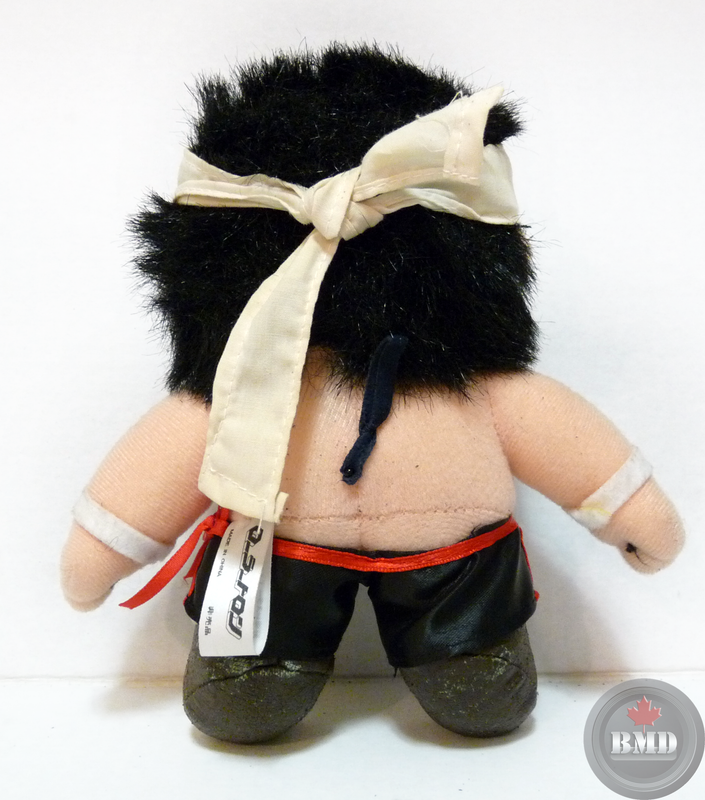
Hashimoto's only plush figure comes with signature (and removable) hatchi-
maki headband and waist belt.
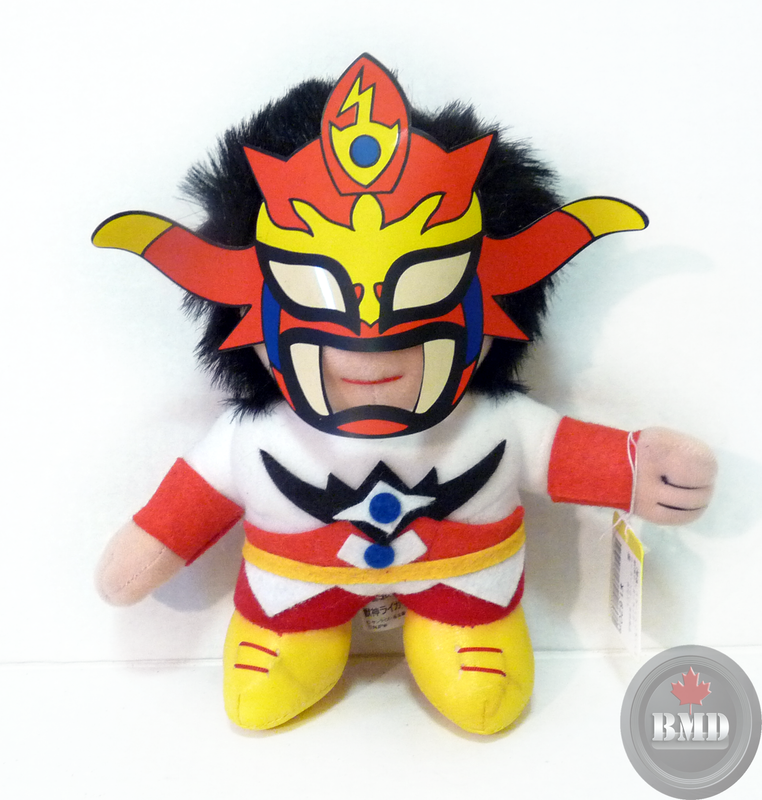
Another sought-after piece is the Jushin Thunder Liger plush (which would
be one of Liger's first-ever figures in general).

As cool as the Liger plush is, I feel the cardboard-like face mask slightly
cheapens the product.
Other figures from the first two sets include Big Van Vader, Kazushi
Sakuraba (in Strong Machine-inspired entrance mask) and an unofficial
Abdullah The Butcher figure (with chain accessory and stitches in
exchange for Abby's famous head scars).
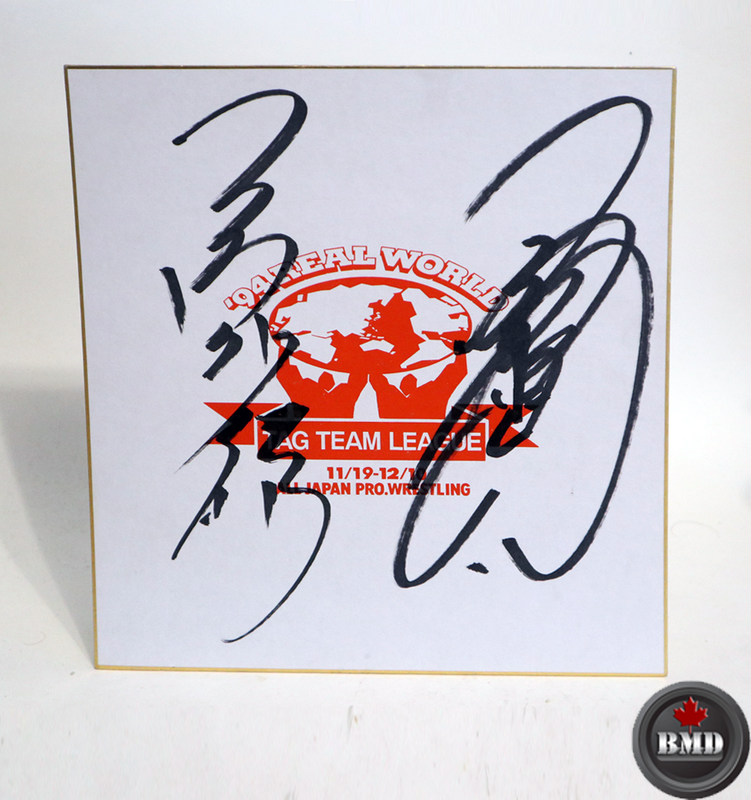
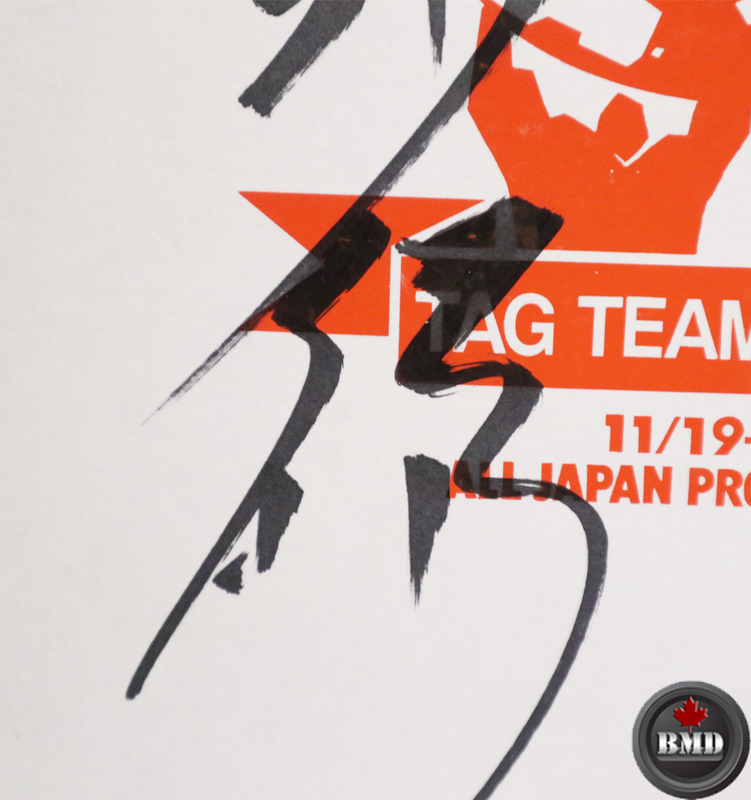
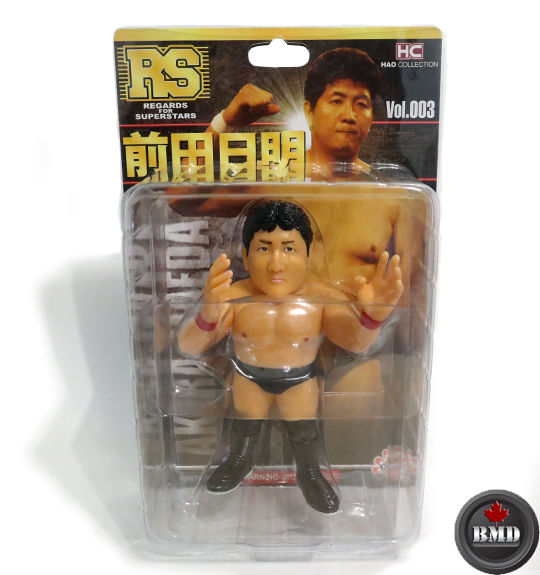

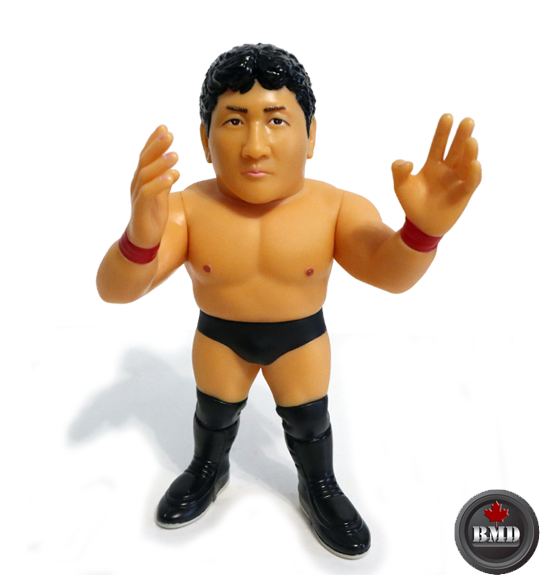



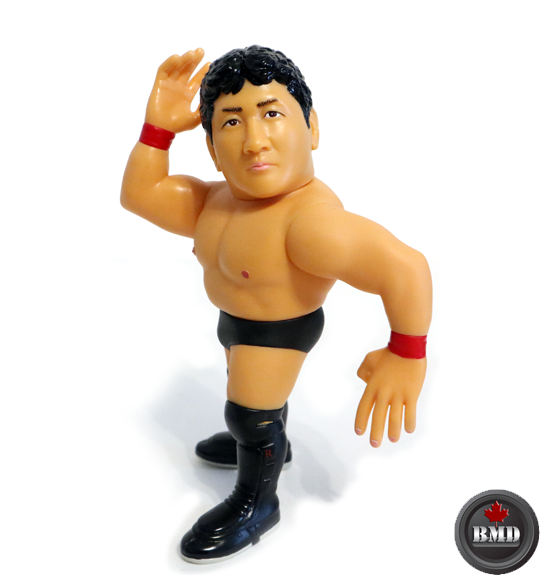
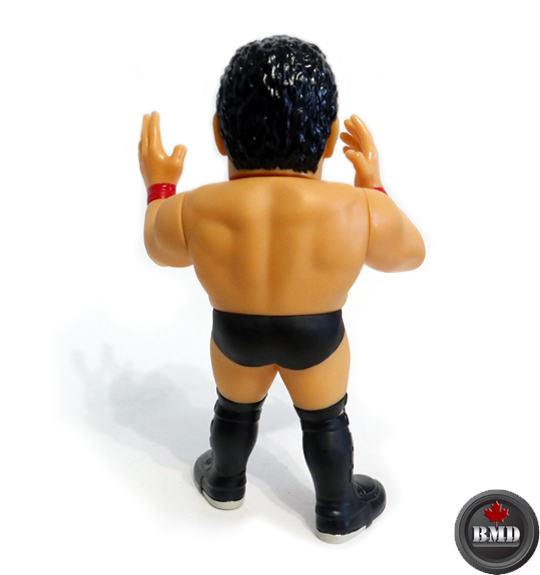



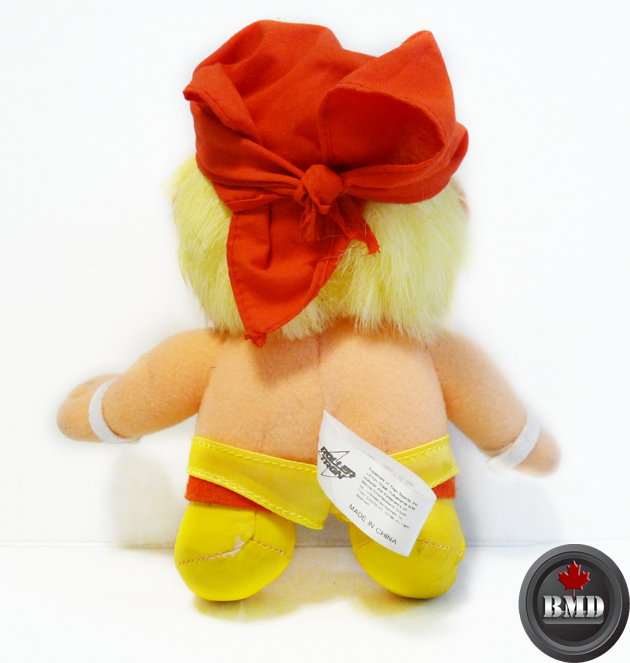



















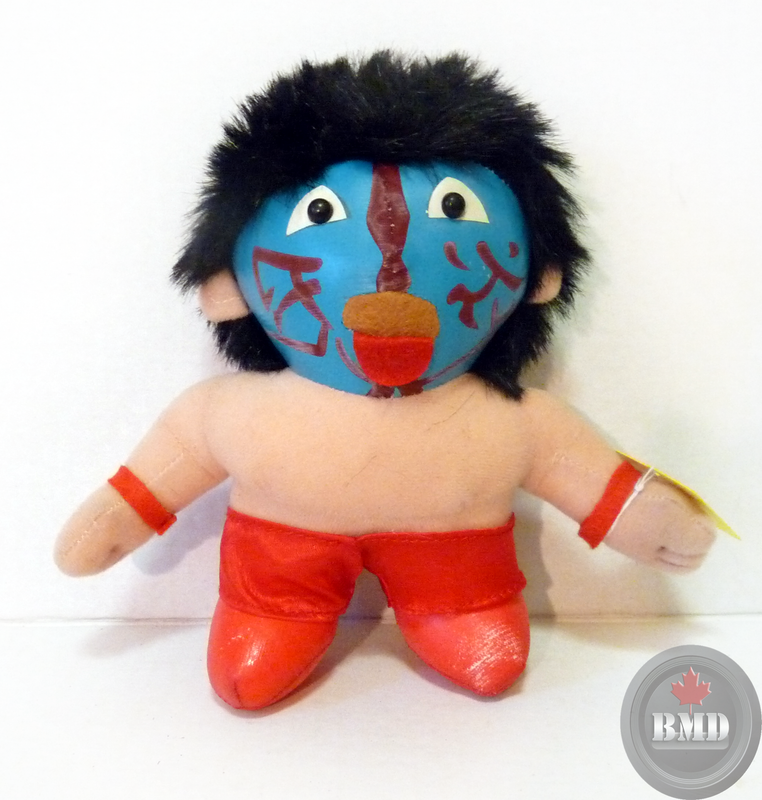

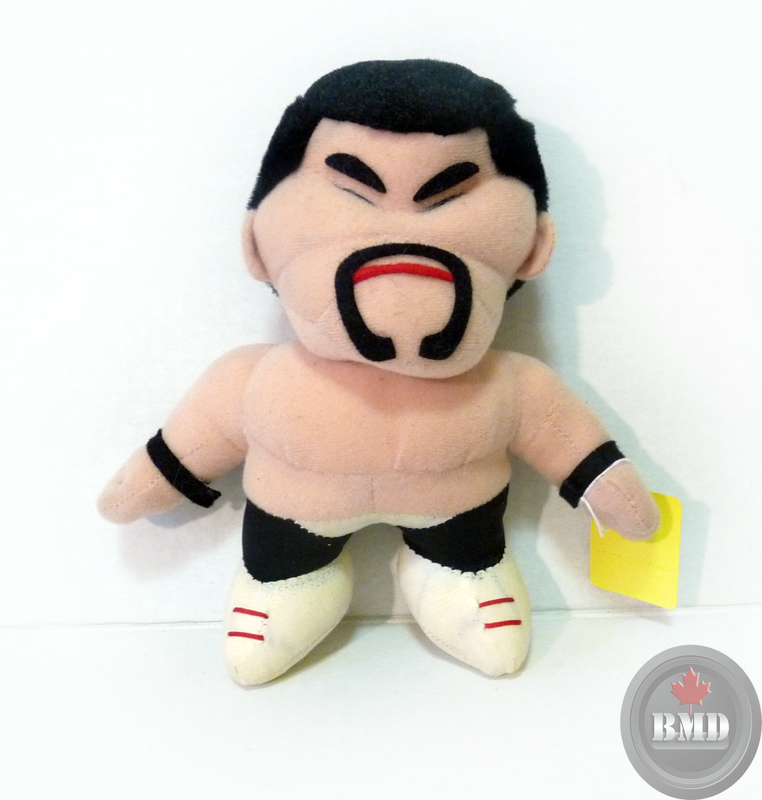





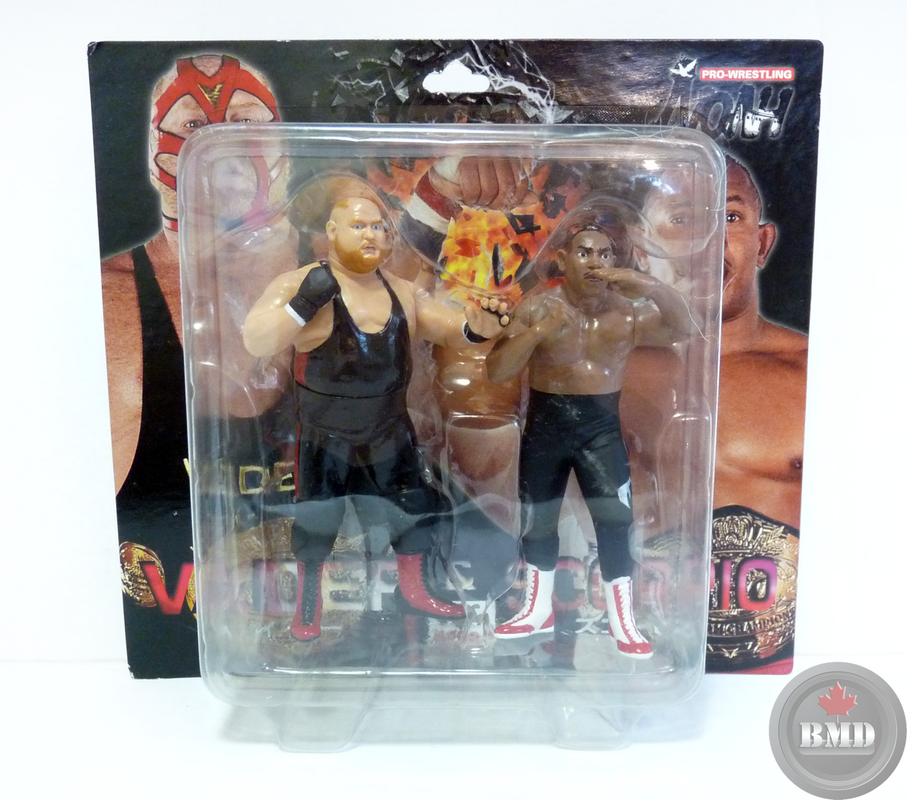
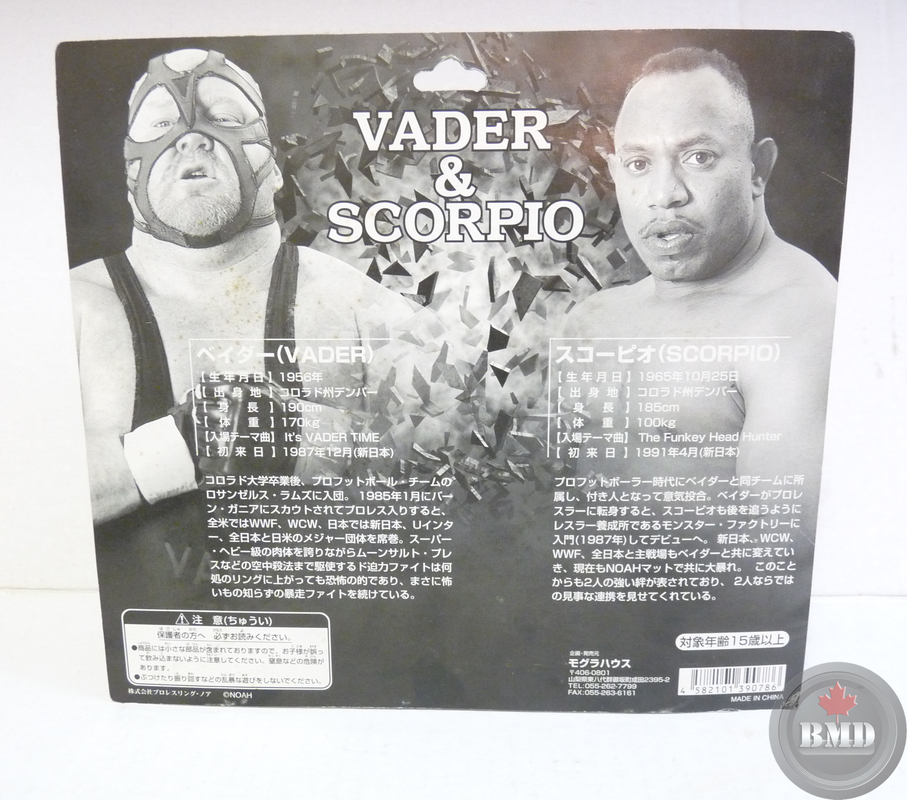
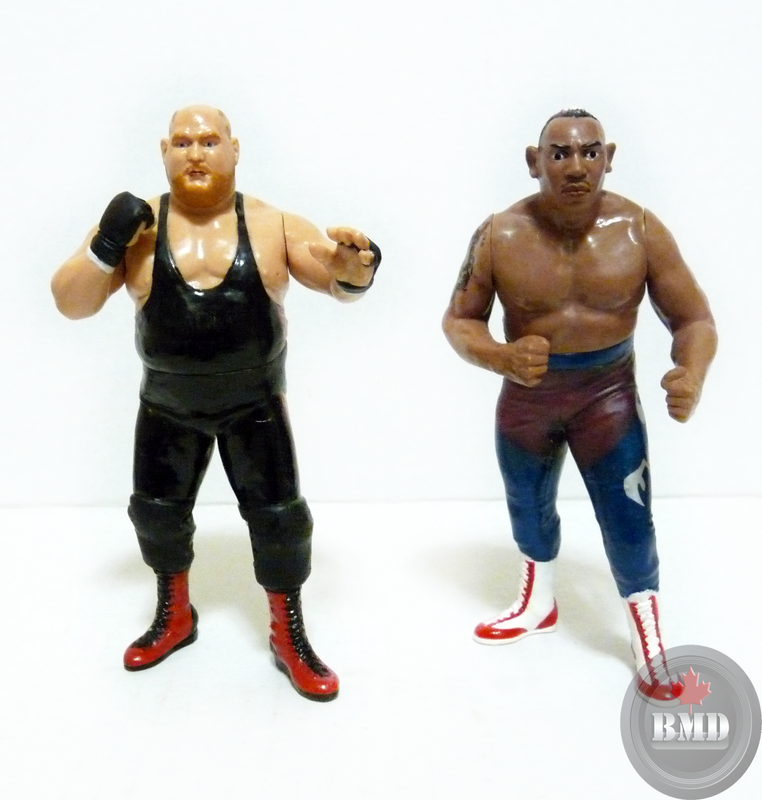
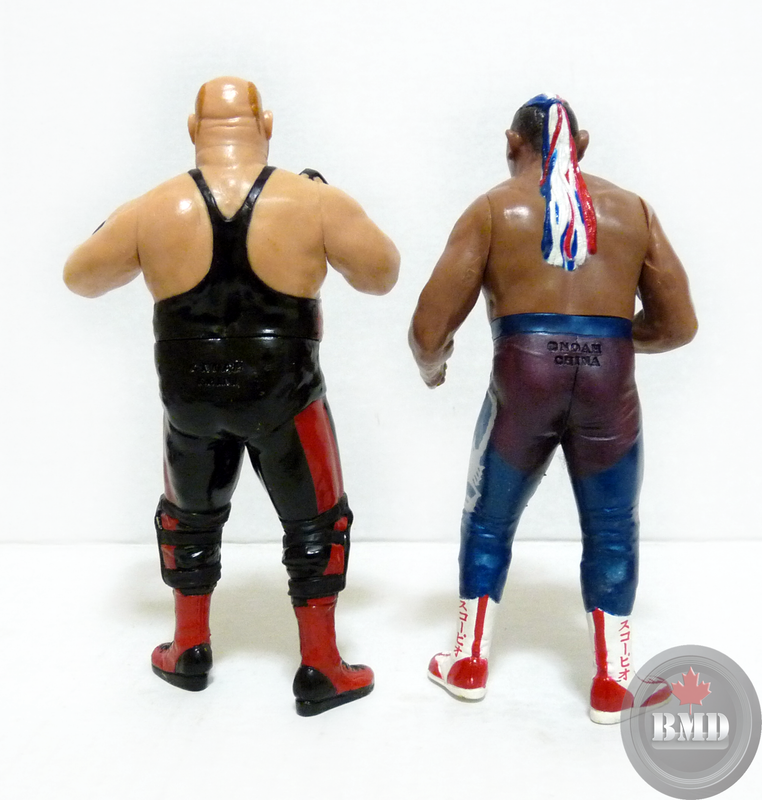
.png)
